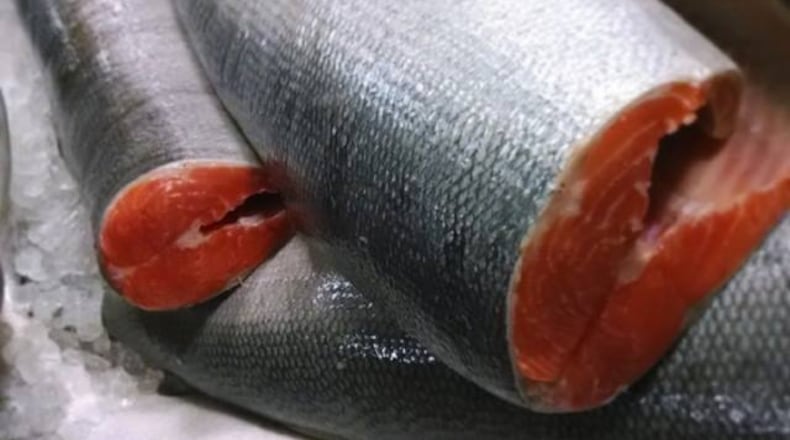Look on any given restaurant menu serving seafood and you are bound to see salmon. You’d be disappointed otherwise. Salmon is one of the most popular seafood items due to its approachability, soft texture and easy-to-pair flavor. According to a 2013 Fish and Seafood survey by Mintel, a third of the population is eating more seafood, and sales are expected to grow by 4.1 percent in 2014.
In recent years however, there has been some fear surrounding the contamination of farmed salmon, both for sustainability and health concerns. It is said to have higher levels of contaminants and contain more saturated fat. But wild salmon is becoming harder to find, and when it does pop up on menus, it tends to be frozen.
Diners are starting to care. Sustainable seafood has appeared on the National Restaurant Association's Culinary Forecast for the past few years, and in the 2014 edition, the sustainable seafood trend has climbed to number nine.
Another reason people should pay more attention to sustainability is the Northwest salmon’s magnificent annual journey. All seven salmon species present in the Pacific Ocean follow a similar life cycle, except Steelhead: they hatch in rivers, travel to the ocean, fatten up naturally, and then return to their natal grounds to spawn.
The sheer endurance it takes for the journey, ranges from distances spanning almost 900 miles to Idaho rivers. And just as fascinating, the salmon return close to the exact spot that they were spawned, according to a 2008 study on salmon migration by biologist Kristina Miller. She said this may be due to salmon’s strong sense of smell, which allows them to smell certain chemicals present in their natal streams.
Their journey back to the spawning grounds is staggered throughout the summer months, and the beginning of June is the height of the season. This time of year provides a great opportunity for restaurants to serve wild Northwest salmon. One such example is Lure, where executive chef David Bradley has created a special menu to highlight the significance of the journey.
“Salmon naturally fatten up in the Pacific Ocean before the journey back to the rivers, so we wanted to take advantage of the seasonality,” he said. “Salmon is already easy to sell to diners and it’s fun to work on multiple dishes centered around the same fish.”
Last year was the first time Lure experimented with the menu and it was well received by guests. Bradley said during last year’s special menu, which lasted a little more than a week, they sold around 480 pounds of just wild sockeye salmon. That is compared to the 180 pounds of their Bay of Fundy Canadian farmed salmon that they serve daily.
This year's special menu includes appetizers and entrees, each geared towards pairings of either red or white wine. It will run from June 3 through June 10.
Credit: Alexa Lampasona
Credit: Alexa Lampasona
The white wine main course is a poached sockeye salmon fillet with summer vegetables and tarragon-tomato consommé.
“We wanted this dish to be as minimalist as you can get, so you focus on the flavor of the fish,” Bradley said. “The salmon is poached in only olive oil, which lends to a soft, delicate flavor.”
The red wine main course is a grilled sockeye salmon steak with gigante beans, southern family farms bacon and rosemary-red wine sauce.
“We use steak cuts of salmon for this method of preparation because grilling imparts a stronger, heartier flavor.”
Lure is ordering the Northwest salmon for this menu from a variety of sources, based on freshness and price. Last year it was Sea to Table, a Brooklyn-based company. Once the fish is ordered, it is delivered overnight.
Perhaps the biggest unknown with wild salmon is that Bradley can’t tell what part of the journey the restaurant’s salmon was caught. A wild salmon’s taste is easily distinguishable from farmed because it is softer, since it expends more energy. Bradley speculates that the leaner and softer muscular salmon are probably farther along.
The next step for Lure is to showcase the Northwest salmon at different points in the journey. “I would love to do a head-to-head taste test on the flavor differences between a salmon at the beginning and end of their journey.”
About the Author
The Latest
Featured



